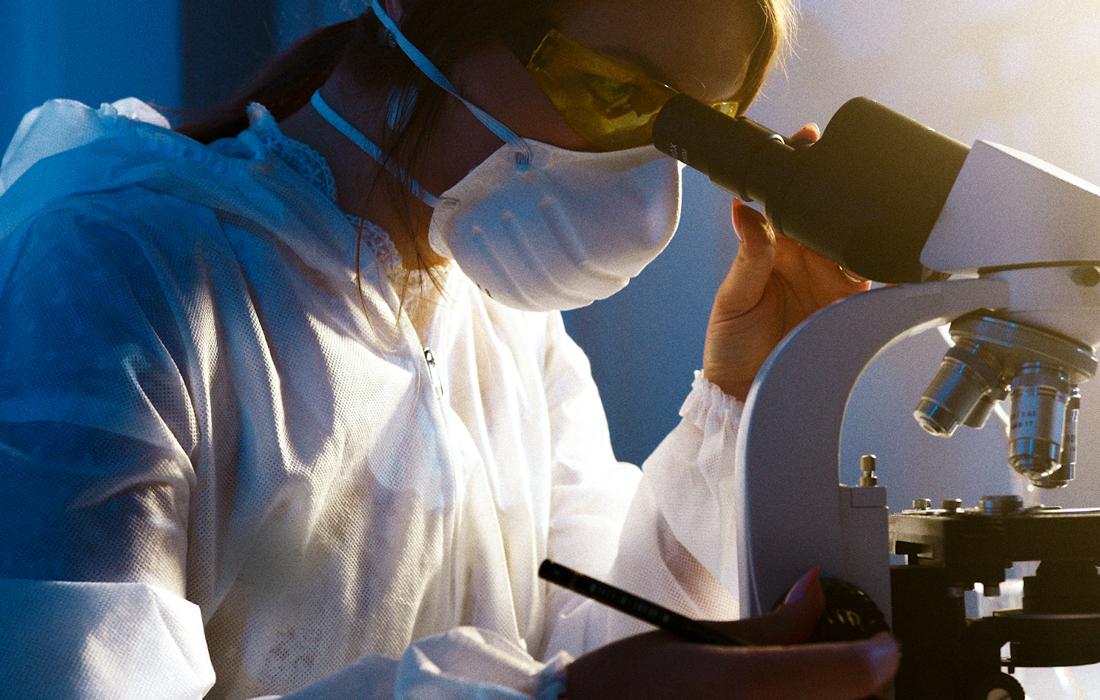Regenerative Medicine News and General Information
Gut Microbiome Can Increase Risk, Severity of HIV, EBV Disease
Recent research has shown that the bacteria and other microbes in our gut play a supporting role in immunity, metabolism, digestion, and the fight against “bad bacteria” that try to invade our bodies.
However, new research published in Nature Biotechnology by Angela Wahl, PhD, Balfour Sartor, MD, J. Victor Garcia, PhD, and UNC School of Medicine colleagues others has revealed that the microbiome may not as always be protective against human pathogens.
Using a first-of-its-kind precision animal model with no microbiome (germ-free), researchers have shown that the microbiome has a significant impact on the acquisition of Epstein-Barr virus (EBV) and human immunodeficiency virus-1 (HIV) infection and plays a role in the course of disease.
HIV is a retrovirus that primarily infects human CD4+ T cells and is mainly acquired through the GI tract. Rectal exposure, for example, in men who have sex with men accounts for more than half of new HIV infections. Breastfeeding is an example of an oral exposure that can also transmit HIV to infants.
Dr. Wenbo Yao, PhD, co-first author, found that rectal HIV acquisition was 200% higher in animals colonized with resident microbiome compared to germ-free animals. Similarly, oral HIV acquisition was 300% higher in animals colonized with resident microbiota compared to germ-free animals. Researchers also noticed that animals colonized with resident microbiota had HIV-RNA levels that were up to 34 times higher in plasma and more than 1,000 times higher in tissues than germ-free mice.
“This is a finding of great significance,” said Wahl. “Everyone has a unique composition of microbes that colonize their gut. In the future, it will be important to evaluate how this diversity among people affects their risk for HIV acquisition and the subsequent course of disease.”
The findings on EBV were also important. EBV is a DNA herpesvirus that infects B cells and can cause mononucleosis.
Almost 95% of the adult population harbors latent infection of EBV, but for some people with compromised immune systems, EBV infection can influence the development of certain types of cancers such as Hodgkin’s lymphoma, Non-Hodgkin lymphoma, Burkitt’s lymphoma and Nasopharyngeal carcinoma.
Wahl and Garcia found that mice with a normal microbiome that were exposed to EBV developed large macroscopic tumors in a variety of organs, including the spleen, liver, kidney, and stomach. These tumors were virtually absent in the germ-free mice infected with EBV. Future studies will be needed to evaluate the possible mechanism(s) for enhanced EBV infection and tumorigenesis in the presence of resident microbiota.
The researchers will now try to pinpoint the factors that determine whether the microbiome plays a role in the persistence of HIV and EBV infections throughout the body and figure out if the microbiome also affects other human-specific pathogens.
More specifically, Wahl, Garcia, and Sartor want to understand how the microbiome is contributing to HIV and EBV infections.
Wahl and Garcia hope that their findings will open a new area of exploration for researchers who are interested in the role of the microbiome on diseases caused by human specific pathogens.
Sources:
Angela Wahl, Wenbo Yao, Baolin Liao, Morgan Chateau, Cara Richardson, Lijun Ling, Adrienne Franks, Krithika Senthil, Genevieve Doyon, Fengling Li, Josh Frost, Christopher B. Whitehurst, Joseph S. Pagano, Craig A. Fletcher, M. Andrea Azcarate-Peril, Michael G. Hudgens, Allison R. Rogala, Joseph D. Tucker, Ian McGowan, R. Balfour Sartor, J. Victor Garcia. A germ-free humanized mouse model shows the contribution of resident microbiota to human-specific pathogen infection. Nature Biotechnology, 2023; DOI: 10.1038/s41587-023-01906-5
University of North Carolina Health Care. (2023, August 10). Gut microbiome can increase risk, severity of HIV, EBV disease. ScienceDaily. Retrieved August 11, 2023 from www.sciencedaily.com/releases/2023/08/230810110414.htm
Photo by Artem Podrez from Pexels: https://www.pexels.com/photo/photo-of-woman-looking-through-camera-5726794/

